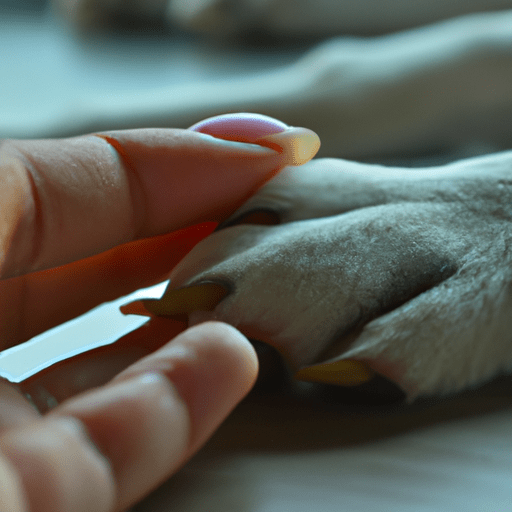When you look at your dog’s paws, you might notice something unusual – peeling skin. This can be a cause for concern as your dog’s paws are vital to their overall health and mobility. While peeling paws can be a common occurrence, it’s important to understand why this happens and what you can do to help your furry friend.
Table of Contents
- Common Causes for Peeling Paws
- How to Treat Peeling Paws
- Preventive Measures
- When to Seek Veterinary Help
- Frequently Asked Questions
Key Takeaways
- Peeling paws can be caused by various factors such as allergies, infections, chemical irritants, or environmental conditions.
- Home remedies like paw soaks and balms can help to treat peeling paws.
- Regular paw care and monitoring can help prevent peeling paws.
- If your dog’s condition worsens or doesn’t improve, it’s vital to seek veterinary help.
Common Causes for Peeling Paws
A variety of factors can lead to your dog’s paws peeling. Understanding these causes can help you provide the best care for your pet.
Allergies: Just like humans, dogs can have allergies too. Certain food items, plants, or chemicals can cause allergic reactions in dogs, leading to symptoms like itchy, peeling paws.
Infections: Fungal or bacterial infections can cause peeling paws in dogs. These infections can occur if your dog has a cut or wound on their paw that becomes infected.
Chemical Irritants: Certain cleaning products, de-icing salts, or pesticides can irritate your dog’s paws, causing them to peel.
Environmental Conditions: Hot pavement or icy conditions can damage your dog’s paws, leading to peeling skin.
How to Treat Peeling Paws
If you notice your dog’s paws peeling, there are several steps you can take to help them.
Paw Soaks: Soaking your dog’s paws in a mixture of warm water and a gentle pet-friendly soap can help to soothe peeling paws. This can be done once or twice a week to help your dog’s paws heal.
Paw Balms: Applying a pet-friendly paw balm can help to moisturize and protect your dog’s paws, preventing further peeling.
Veterinary Care: If your dog’s paws continue to peel despite your best efforts, it may be time to seek help from a veterinary professional. They can provide a proper diagnosis and recommend appropriate treatments.
Preventive Measures
Prevention is key when it comes to peeling paws. Here are some steps you can take to protect your pet’s paws.
Regular Paw Checks: Regularly checking your dog’s paws can help you spot signs of peeling early and provide prompt treatment.
Avoid Chemical Irritants: Avoid walking your dog in areas where chemical irritants may be present.
Protective Booties: During extreme weather conditions, consider using protective booties to shield your pet’s paws from hot pavement or icy conditions.
When to Seek Veterinary Help
If your dog’s paws continue to peel despite your best efforts, it’s time to seek help from a veterinary professional. They can provide a proper diagnosis and recommend appropriate treatments. A vet visit is crucial if your dog’s paws are bleeding, show signs of infection, or if your pet is limping or showing signs of discomfort.
Frequently Asked Questions
1. Why are my dog’s paws peeling?
Peeling paws in dogs can be caused by allergies, infections, chemical irritants, or harsh environmental conditions.
2. What can I do if my dog’s paws are peeling?
Paw soaks, paw balms, and veterinary care can help treat peeling paws.
3. How can I prevent my dog’s paws from peeling?
Regular paw checks, avoiding chemical irritants, and using protective booties can help prevent peeling paws.
4. When should I take my dog to the vet for peeling paws?
If your dog’s paws are bleeding, show signs of infection, or if your pet is limping or showing signs of discomfort, it’s time to visit the vet.
In conclusion, peeling paws can be a common issue in dogs, but with the right care and attention, it can be effectively managed. Always remember that when in doubt, it’s best to consult with a veterinary professional to ensure your pet receives the best care possible. For more information on maintaining your dog’s overall health, feel free to explore the OneTopDog blog.



